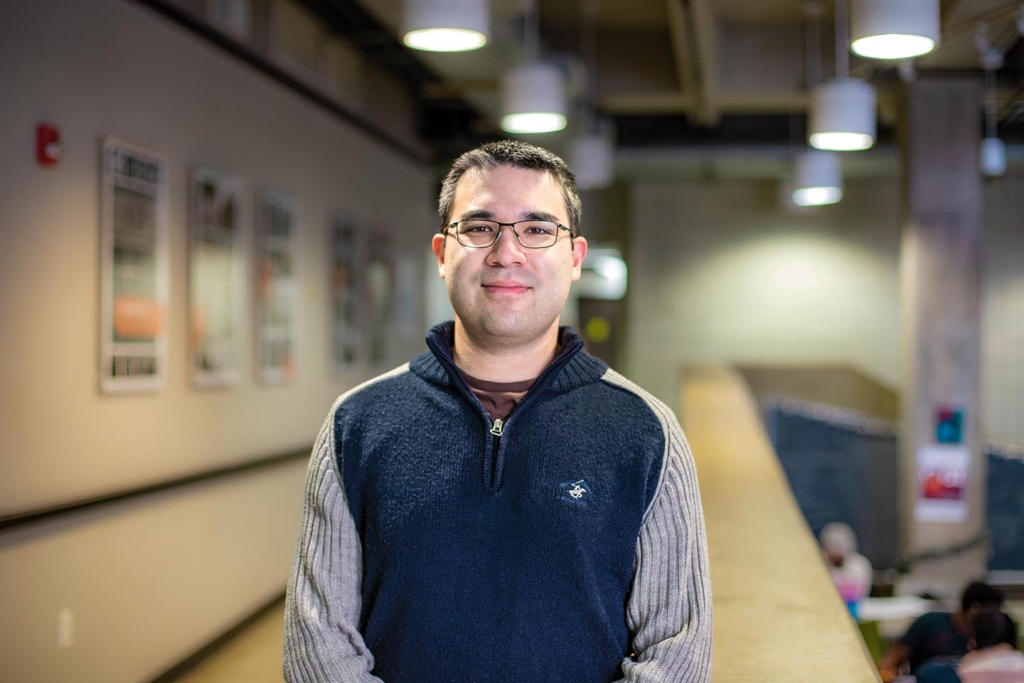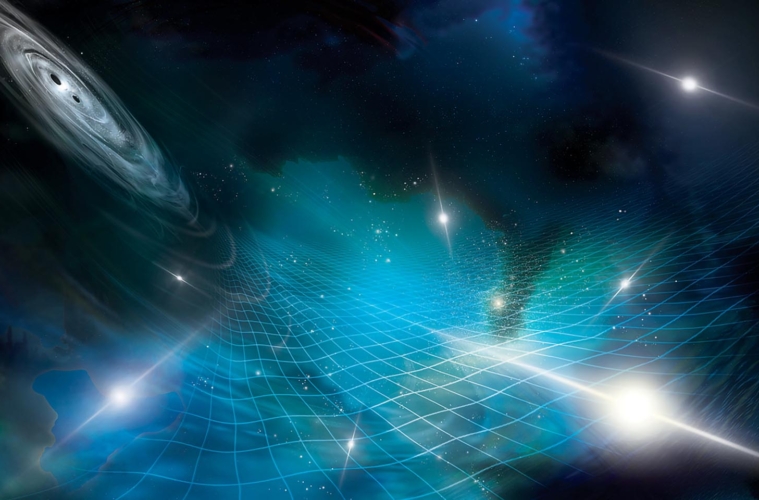Michael Lam ’11 was part of the team that finally discovered a phenomenon predicted by Albert Einstein more than a century ago.
While we sit and as we sleep, the entirety of the universe is being expanded and contracted by gravitational waves that imperceptibly alter the woof and warp of space itself. This astonishing discovery was confirmed on June 28, when NANOGrav, a collaborative of more than 190 scientists from around the globe, released the results of their 15-year search for the elusive waves. Michael Lam ’11, a research scientist with the SETI Institute, was a member of the NANOGrav team.
Though the existence of these perturbations in the gravitational field had been predicted by Albert Einstein’s theory of general relativity, which he published in 1915, finding them took more than 100 years.
Einstein discovered that gravity bends space, and does so in proportion to the mass of objects. Think of placing a bowling ball on a trampoline and you get an idea of what it looks like when large objects like planets or stars distort the shape of the space around them. Gravitational waves are fluctuations in the gravitational field — most likely propagated by huge cosmic events — that travel and permeate space, creating a kind of background hum of gravitational activity.
These gravitational waves have been notoriously hard to detect, but Lam and his colleagues developed a novel approach to find them — one that involved using pulsars, collapsed stars that produce energy that is observed at very regular intervals. “Pulsars are like clocks, and we measure when their pulses arrive at our telescopes,” Lam explains. “If the pulses arrive early, or late, maybe they got squeezed a bit in compressed space, or maybe space was a little stretched by the waves.”
Unfortunately, the discovery process was not so straightforward. “There could be a million other reasons for an inconsistency in the pulses. Maybe the pulsar is in orbit with another object or there’s some other interference,” says Lam. “We weren’t quite sure how precise and accurate the pulsars would be, and what it would take to make our detectors work.”
The team was able to confirm the gravitational waves were interfering with the pulsar signals when they looked at pulsars in the same sector of the sky and found similar irregularities in their pulse patterns. “We knew then what we were seeing,” Lam recalls. “That was incredibly exciting.”
“We’ve opened up a new window into the universe.”
The source of Lam’s love of astronomy is not unique but it has a distinctly Colgate twist. Growing up in New York City, Lam was astonished on his first visit to the countryside when he looked up and could see the night sky. Soon after, Lam’s parents, Cindy Sherling ’83 and John Lam ’80, brought him to Colgate’s Foggy Bottom Observatory for a tour hosted by astronomy professor Thomas Balonek, who later ended up being Lam’s undergraduate adviser. “I remember going up a ladder and looking into the eyepiece of the telescope and seeing Jupiter with its atmospheric bands, and they gave me a picture of Jupiter. It was my first experience with a telescope, and that’s when I knew what I wanted to do.”

The next task for Lam and his colleagues is to suss out the source of the gravitational waves. “I’ve been telling people that the most mundane explanation is that they could be coming from supermassive black holes in the center of emerging galaxies,” says Lam, laughing. “In reality, there are probably many different sources. One possibility is that they are from moments after the Big Bang, during the period called inflation. We haven’t really had any direct observation of that period so far.”
Reprising Winston Churchill’s saying, Lam calls his team’s discovery the end of the beginning. “We figured the waves were there and we found them. More importantly, we’ve opened up a new window into the universe,” he says. “Every time you do that you not only understand the universe better, but you start to see new things that you didn’t even know were there. What new physics are we going to find now? Who knows?”
— Chris Quirk

